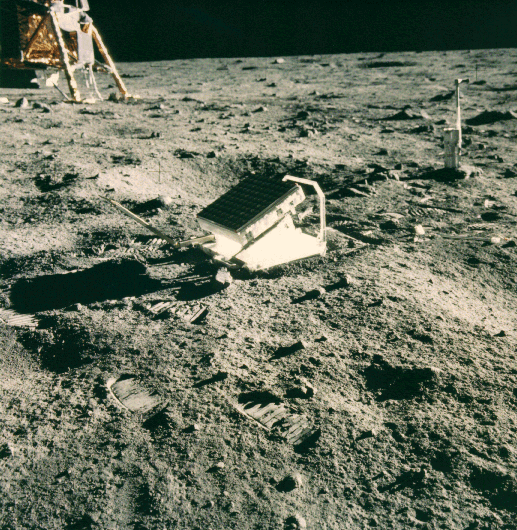From 1969 to 1972, Apollo astronauts had left laser reflectors on the moon’s surface, enabling astronomers to measure the moon’s distance from Earth with great accuracy. Although the moon’s distance from earth varies each month because of its eccentric orbit, the moon’s mean distance from Earth is nonetheless increasing at the rate of about 3.8 centimeters (1.5 inches) per year. That’s about the rate that fingernails grow.
Tidal friction with the Earth’s oceans is responsible for this long-term increase of the moon’s distance from Earth. It’s causing the moon to spiral into a more distant orbit. Tidal friction also slows down the Earth’s rotation, lengthening the day by about 1 second every 40,000 years. Hence, the number of days in a year is slowly diminishing over the long course of time.
Simulations suggest that at the time of the moon’s formation some 4.5 billion years ago, the moon was only about 20,000 to 30,000 kilometers from Earth. Way back then, Earth’s day might have been only 5 or 6 hours long. That would mean over 1,400 days in one year!
However, astronomers suspected the moon was receding from Earth before the heyday of the Apollo astronauts. Edmund Halley’s (1656 to 1741) studies of ancient solar and lunar eclipses suggested the possibility, as well. George Howard Darwin (1845 to 1912) is credited for figuring out mathematically how tidal friction affects the moon’s orbit.
Studies in fossilized coral indicate that the Earth had spun faster upon its rotational axis when the moon was closer to Earth. Millions of years ago, days on Earth were shorter yet more abundant. For instance, around 900 million years ago, there were about 480 18-hours days in one year. Around 400 million years ago, there were about 400 22-hour days in one year. Looking into the future, astronomers expect longer days but fewer of them in one year.
If the lifetime of the Earth-moon system lasts long enough (which is doubtful), it is projected that after many billions of years, the same sides of the Earth and moon would face one another. In other words, the Earth’s rotational period and the moon’s orbital period would equal one another, representing a period of 47 days. At that time, the Earth/moon distance would expand to some 560,000 km, exceeding the present distance of 384,400 km by nearly 150%.
Source - EarthSky.org
Source - EarthSky.org


No comments:
Post a Comment